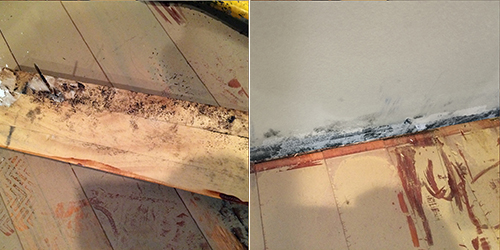How to Help Prevent Water Damage in Your Bathroom
How to Help Prevent Water Damage in Your Bathroom
Blog Article
The publisher is making several good points related to Common Causes of Water Damage in a Bathroom overall in this article on the next paragraphs.

The restroom is very at risk for damp accumulation and prospective water damage because of the constant use of water in it. This article supplies basic examination methods to help identifying water damages hazards.
The constant use of water in the bathroom makes it very prone for moist accumulation as well as prospective water damage. By inspecting it on a regular basis, you can decrease water related damages.
The adhering to set of inspections is simple to execute as well as need to be done as soon as in every 3 months in order to keep your shower room in good shape as well as to prevent potential water damages triggered by the tub, the shower, pipe joints and plumbing, sinks, cabinets, and also the toilet
Do not overlook carrying out these inspections and be comprehensive while executing them. Bear in mind that these basic assessments can save you a lot of cash by supplying very early indicators for water damage
Sinks as well as Cabinets
Sinks as well as cabinets are subjected to moisture and humidity daily and also are often forgotten. Inspect consistently under the sink as well as on the countertop over it. Repair any type of drip in the catch as it may recommend drain problems. Look around the sink, slow-moving draining pipelines might suggest a blocked drain. Replace sink seals if they are broken or loose.
Bathtub and also Shower
The shower as well as bathtub call for unique attention and also maintenance. Examine the ceramic tiles and also change if fractured. See to it that there is no missing grout between the tiles. Examine and change split caulking at joints where the wall surfaces satisfy the floor or the bath tub. Obstructed drains and pipes troubles will prevent the bath tub from drying out and may indicate severe issues below the bathtub. Speak with a professional promptly to avoid structural damages. Take note of discolorations or soft locations around the tub walls as they might show an internal leakage.
Plumbing
Signs for water damages are difficult to find considering that most pipes are mounted inside the walls.
Pay unique focus to floor covering as well as walls wetness as well as discolorations as they may suggest an unnoticeable plumbing trouble. Check wetness degrees in adjoining rooms also.
The Bathroom
The bathroom is an at risk water joint. Examine the water lines and also search for leaks around the bathroom seat, in the tube, and under the water tank. If you find any type of indicators of moisture on the floor around the toilet, look for leakages in the toilet rim as well as storage tank seals.
Realize that hanging commode dish antiperspirants raises the chances for blockages.
TIPS TO PREVENT WATER DAMAGE IN THE BATHROOM
The average household uses approximately 80-100 gallons of water per person per day. For a family of 4, that's almost 2,500 gallons of water a week! The largest portion of this consumption comes from bathroom use. Flushing the toilet uses the most water, followed by taking a shower or bath. With that much water running through the home, water damage in the bathroom is bound to happen. Knowing how to spot signs of a water leak is essential to preventing long-term damage. This guide provides you with tips to reduce the impact of water damage on your bathroom.
CAUSES OF BATHROOM WATER DAMAGE
Pipe breaks are the most common cause of water damage we see in our daily jobs. The age of a pipe plays a large role in a pipe break as well as corrosion. Over time, the metal begins to break down, allowing water to escape. Frozen pipe breaks are also a concern in the winter months. Toilet overflows caused by paper products or children flushing inappropriate items. Degraded caulking around the toilet or bathtub can allow water seepage, sometimes behind the fixture, into the subfloor or walls. Condensation forms when the water in a pipe is cooler than the air temperature. Beads of water form on the exterior of the pipes, sometimes so much so that the water begins to drip and pool below. Sink or shower backups created by poor drainage. HOW TO PREVENT WATER DAMAGE IN YOUR BATHROOM
Inspect your toilet supply line for worn or frayed hoses and replace them as needed. Winterize your plumbing to prevent a frozen pipe break. Use vent fans to prevent condensation that can lead to mold growth. Routinely check and replace degraded caulking around your toilet or bathtub. Increase the temperature in your toilet tank and insulate your pipes during the warm summer months to keep condensation from forming. Use child safety locks on the toilets. Flush only toilet paper. "Flushable" wet wipes are actually not good for your plumbing system. Additionally, feminine hygiene products should not be flushed. Prevent water from escaping the tub or shower. Make sure shower curtains are in good condition. Inspect shower doors and replace the seal strip if necessary. Wipe up any water that accumulates on the floor and use bath mats. Water left to sit can cause damage to the tiles and flooring. Refrain from using bath products containing heavy oils to avoid a clogged drain.

I hope you enjoyed reading our part on How to Prevent Bathroom Water Damage. Thank you so much for finding the time to browse our piece. For those who enjoyed our post if you please do not forget to pass it around. We value reading our article about Looking for Signs of Water Damage in the Bathroom.
Contact Us Now Report this page